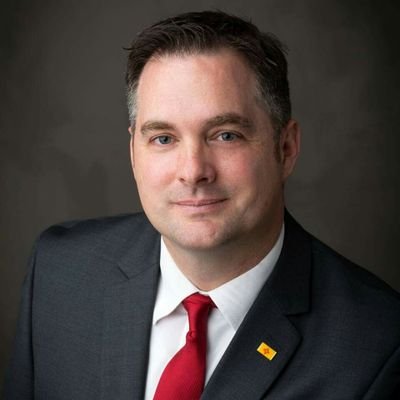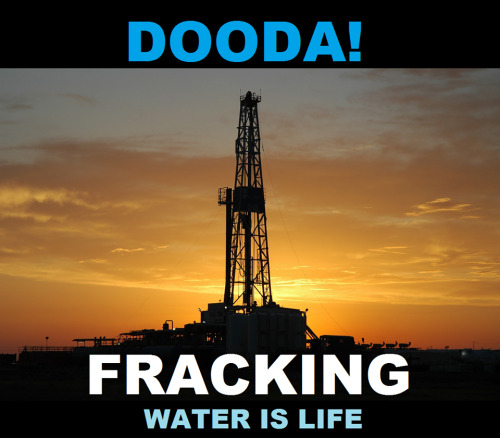No More Water for Fracking! Resource Colonialism in New Mexico and the Production of Contaminated Water

by Berkley Carnine
In the high desert of the Southwest, water is a precious resource that is sacred to Indigenous peoples. Water is also the lifeblood of the fracking industry. To drill for oil and gas reserves, millions of gallons are needed. Water has to be stolen from Indigenous peoples, and water that is contaminated by fracking fluids also pollutes vital freshwater sources such as aquifers and rivers. Industry experts call this “produced water,” which is a nice way to say dirty frack water.
This November 15 and 16 at Hotel Santa Fe Hacienda and Spa, officials from the state, the EPA (the Environmental Protection Agency), and the Department of Interior will gather with representatives from the oil and gas industry, produced water companies, and private equity, legal, and infrastructure experts to “clarify the existing regulatory and permitting frameworks related to the way produced water from oil and gas extraction can be reused, recycled, and renewed for other purposes (NM Produced Water Conference events website).” Put another way, they will rewrite regulations in order to guzzle up the region’s scarce and sacred fresh water resources and will “re-introduce” produced water into the hydrologic cycle. This means that water used for hydraulic fracturing (fracking) that is contaminated with brine, toxic medals, and radioactivity will be dumped into fragile watersheds.
Oil and gas companies “produce” water by mixing it with chemicals such as methanol, BPTX, lead, diesel fuel, hydrogen fluoride to use for fracking. This produced and contaminated water is creating an industry of its own. Much like the oil and gas industry, it is regulated by the oil and gas industry with the help of government officials. New Mexico’s Produced Water Conference lays out their plans to frack up or “produce” as much of their stolen water as possible and then have the public help shoulder costs to “clean up produced water” so it can be used for drinking water and returned to the watersheds.
Oil and gas companies will continue putting profit over people as they escalate the contamination of ecosystems and Indigenous communities’ drinking water who live in designated “sacrifice zones” and watersheds, and communities more broadly. And the profit is substantial—$1.2 billion new monies in the state budget from oil and gas this year alone. It will take considerable people power to force these officials and corporate executives to stop stealing and contaminating water; escalating climate change, stop creating national, genocidal “sacrifice zones”; and instead to put that money into restoring communities and land bases ravaged by resource colonialism and into a just transition away from fossil fuel dependency.
The concerns this conference raises—with its plans for continued plunder—are myriad, while the corruption dives as deep as the fracking. To get a sense of the types of policies this conference will be generating we have to go no further than the list of sponsors and speakers, the $1,000- $5,000 cost of sponsorship for a corporate advertising slot during luncheons, and two key government officials whose Zinke-style policies are foundational to this conference: Ken McQueen and Tom Blaine.

New Mexico Energy, Minerals and Natural Resources Cabinet Secretary Ken McQueen was most recently was vice president of WPX Energy, which is one of the main companies fracking the San Juan Basin and Greater Chaco region and the company responsible for fracking storage units exploding near Nageezi, NM, forcing Dine community members to evacuate in July of 2016. (See our report on fracking in the Trig-Chapter area here.) His specialty with WPX was “understanding state and federal regulatory frameworks and working with government officials to streamline corporate interest.” He went on to re-write the “regulatory frameworks” for the Governor as the Governor’s appointed Cabinet Secretary. It seems likely, if elected as New Mexico’s governor, Republican candidate Steve Pearce would keep McQueen in his current position and ensure easy and profitable access to Indigenous lands (often mistakenly called “public lands”).

Tom Blaine is the New Mexico State Engineer who administers water code and has the final say on all water related decisions for the state. In October 2017, three out of eight commissioners for the Interstate Stream Commission he oversees stepped down within 24 hours of each other, including allies of New Mexico’s current Republican governor Susanna Martinez. The dissident commissioners stated Blaine wasn’t letting them do their job. Blaine was meeting with mining companies without an attorney present and negotiating outside standard procedures. The State Land commissioner filed a lawsuit against Blaine after it was revealed that he had illegally sold some 415 million gallons of water to oil and gas companies by repeatedly selling temporary permits to the same companies up to six times. Blaine currently sits on the advisory board of the New Mexico Water Resources Research Institute. The institute’s presentation at the Produced Water Conference is titled, “The Feasibility of Utilizing Produced Water to Improve Drinking Water Supply in Southeastern New Mexico.” Evident in the title is a plan to address what they recognize as “Persistent water scarcity and increasing demands for freshwater in Eddy and Lea Counties of southeastern New Mexico” by considering alternative water sources—namely water contaminated by fracking. The institute also states that “the region’s oil and gas industries devote considerable financial resources to managing greater than 100,000 acre feet per year of produced water that is co-produced during oil and gas extraction.” This suggests that the oil and gas industry feels burdened by the cost of cleaning up the water they’ve contaminated and they’d like to put policies in place to displace that burden onto the public.
Also sponsoring the conference is the New Mexico Desalination Association whose members are interested in the state’s proposed billion dollar investments in produced water recycling and re-use by 2022. This is part of an effort to create a multi-billion dollar a year water treatment,supply, chemical processing, and supply sectors. According to the conference’s website, two other speakers have partnered to create “the world’s largest inland brackish groundwater desalination plant is El Paso’s Kay Bailey Hutchinson Desalination Facility, which currently produces up to 27 million gallons per day (MGD) of potable water, but is expanding to treat up to 45 MGD by 2020.” Some capitalists herald this facility as the “world’s first-of-its-kind commercial water plant that will convert wastewater from the city’s desalination process into fresh drinking water, by extracting all contaminants and transforming them into reusable mineral products (NM Produced Water Conference).” Yet, considerable research shows that it is near impossible to clean up produced water, as it is not only desalinization that is necessary, but dealing with toxic chemicals and radiation.
The conference agenda includes a panel titled, “The Art of the Possible… Opportunities for Produced Water Recovery, Use, and Re-Use.” The title takes on dystopian and satirical tones when paired with these lines from the conference’s website: “The oil & gas industry in New Mexico is currently facing two major challenges associated with water management that threaten to limit future oil and gas development in the state: acquiring fresh water for drilling and development of new wells; and management of produced water. These challenges are especially critical in southeastern New Mexico, which is arid, has limited fresh water resources, and where produced water disposal by deep well injection is becoming constrained by dwindling geologic disposal capacity and induced seismicity concerns.” The area of Southeastern New Mexico, in Lea, and Eddy Counties where researchers are concerned about produced water disposal by deep well injection causing seismic activity, is where Holtec International plans to build its interim storage facility for nuclear fuel.
Leona Morgan, co-founder of Nuclear Issues Study Group in New Mexico explains, “Currently, the US Nuclear Regulatory Commission (NRC) is processing an application from Holtec International to build a CIS facility between Carlsbad and Hobbs, a “temporary” dump that would hold all of the nation’s waste uranium fuel from commercial nuclear reactors for up to 120 years (Nuke Watch).” Los Alamos is a part of the New Mexico Water Resources Research Institute that is conducting a study entitled “The Feasibility of Utilizing Produced Water to Improve Drinking Water Supply in Southeastern New Mexico.” Not surprisingly, Los Alamos, nor Holtec International, nor researchers working for the oil and gas company have conducted a feasibility study on the risks of transporting and storing all of the uranium fuel (nuclear waste) from reactors in the United States in an area where fracking and the storage of produced water has increased earthquake activity.
EPA regulations haven’t caught up with the new forms of extreme extraction such as fracking (and have never ensured safety for Indigenous, other racialized communities, and our climate). Public officials attending the conference are there to cut any “red tape” that might slow extraction and share in the profit. We can assume they aren’t developing safety regulations to ensure that fracking doesn’t cause earthquakes around the nuclear waste site. The responsibilities to monitor safety, health impacts, air and water pollution, and now the possibility of earthquakes fall on the people already most impacted and concerned.

We only need to read Sandoval County Commissioner Jay C. Block’s Facebook page to understand what this looks like at a county level. Industry has its sights on Sandoval County, where thousands of acres are on the auction block. In a recent post, Block conflates the goal of having a citizen’s regulatory board to oversee oil and gas interests in Sandoval County with the proposed ban on fracking, which he argues is illegal. “We will get sued,” he writes. “I will pay 100s of thousands of dollars in legal proceedings.” He uses the overturned ban passed in Mora county to argue any serious threat to oil and gas profit is illegal. What Block proposes instead is an ordinance that, he argues, is “the most restrictive” in the state. It includes “tribal notification” but not consultation, noise regulations, dividing the county in two for more and less restrictive fracking, and “quarterly testing by industry.” Again, we see the plan to have industry regulate itself, with little to no oversight, to address concerns regarding the water and air quality, communities’ health, and Indigenous sovereignty.
The strategy of bringing corporate representatives to the table with government officials to write, amend, or outright discard environmental and regulatory laws to ensure seismic profit is not new. The practice of making and amending laws—including the breaking of and refusal to enter into new treaties—in order to dispossess Indigenous people of their ancestral land, mineral and water rights, and sovereignty, alongside the dispossession of Black peoples’ subjectivity, labor, and life are the foundation to the settler state. Yet this conference demonstrates an emboldened corporate-settler government setting policy for what is becoming the world’s most valuable resource: water, as they go after the earth’s remaining oil and gas reserves.
As people impacted and outraged by plans for produced water to be dumped into watersheds, the remaining fresh water turned into chemical cocktails by fracking, the likelihood of nuclear contamination if deep injections of fracked water cause an earthquake near Holtec International’s proposed facility, and an economy driven by profit over people and the earth, we’re required to intervene in the settler state’s business as usual. We must demand an end to continuing roll out of genocidal policies by state and corporate interests. It’s time we show them that when it comes to water, land, and life, there are no more backroom deals, and in fact no back rooms at Hotel Santa Fe.
Evict the settler state from Greater Chaco! Public control over utilities! Jail Blaine and Zinke! Violence to the land is Violence to the water is Violence to the people!
Stop the Violence! Water is Life! No New Leases! No More Water for Fracking!





